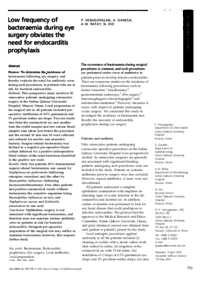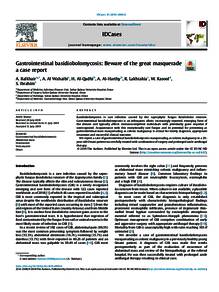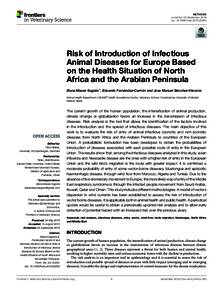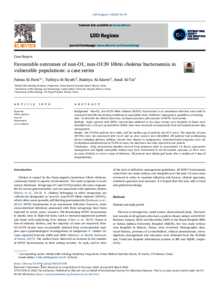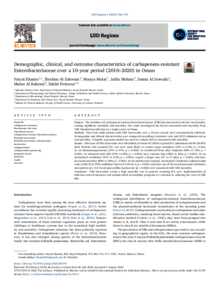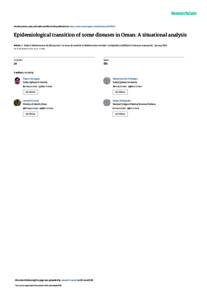وثيقة
Low frequency of bacteraemia during eye surgery obviates the need for endocarditis prophylaxis.
المعرف
DOI: 10.1038/eye.2001.243
المصدر
Eye. V. 15, 6, P. 753-755
المساهمون
الدولة
United Kingdom.
مكان النشر
London
الناشر
Royal College of Ophthalmologists.
ميلادي
2001-11-01
اللغة
الأنجليزية
الملخص الإنجليزي
Purpose. To determine the incidence of bacteraemia following eye surgery, and thereby evaluate the need for antibiotic cover during such procedures, in patients who are at risk for bacterial endocarditis. Methods. This prospective study involved 50 consecutive patients undergoing extraocular surgery at the Sultan Qaboos University Hospital, Muscat, Oman. Local preparation of the surgical site in all patients included pre-operative instillation of 0.3% gentamicin and 3% povidone-iodine eye drops. Two eye swabs (one from the conjunctival sac and another from the eyelid margin) and two venous blood samples (one taken just before the procedure and the second 10 min into it) were collected and cultured for aerobic and anaerobic bacteria. Surgery-related bacteraemia was defined as a negative pre-operative blood culture followed by a positive intraoperative blood culture of the same bacterium identified in the positive eye swab. Results. Only two patients (4%) demonstrated surgery-related bacteraemia: one caused by Staphylococcus epidermidis (following entropion correction) and the other by Haemophilus influenzae (following dacryocystorhinostomy). Four other patients had positive conjunctival swabs without bacteraemia, the causative organisms being Haemophilus influenzae in two, and Staphyloccus aureus and Klebsiella pneumoniae in one each. Conclusion. Ophthalmic surgery is not associated with significant bacteraemia, and therefore does not mandate routine antibiotic cover in patients at risk for bacterial endocarditis. Stringent pre-operative preparation of the surgical site may suffice to minimise bacteraemia; however, this requires further study.
ISSN
0950-222X
URL المصدر
قالب العنصر
مقالات الدوريات

